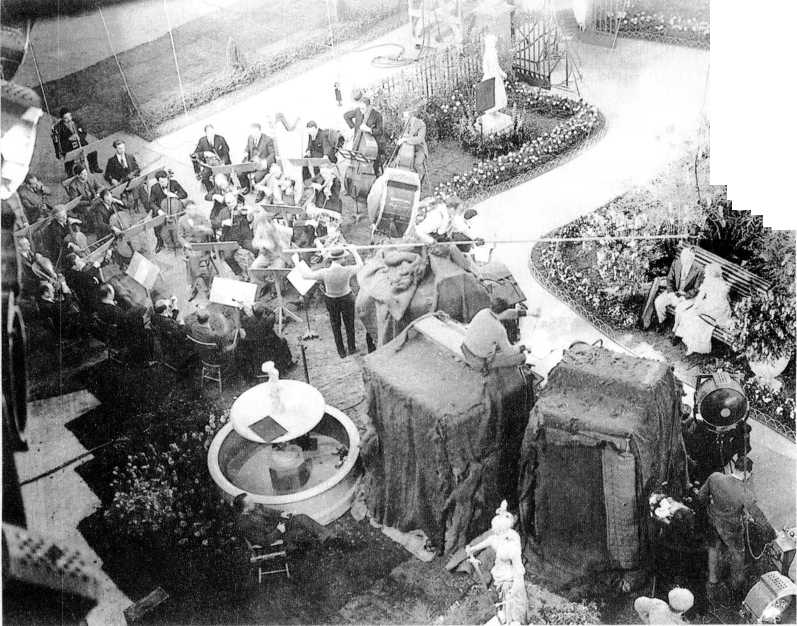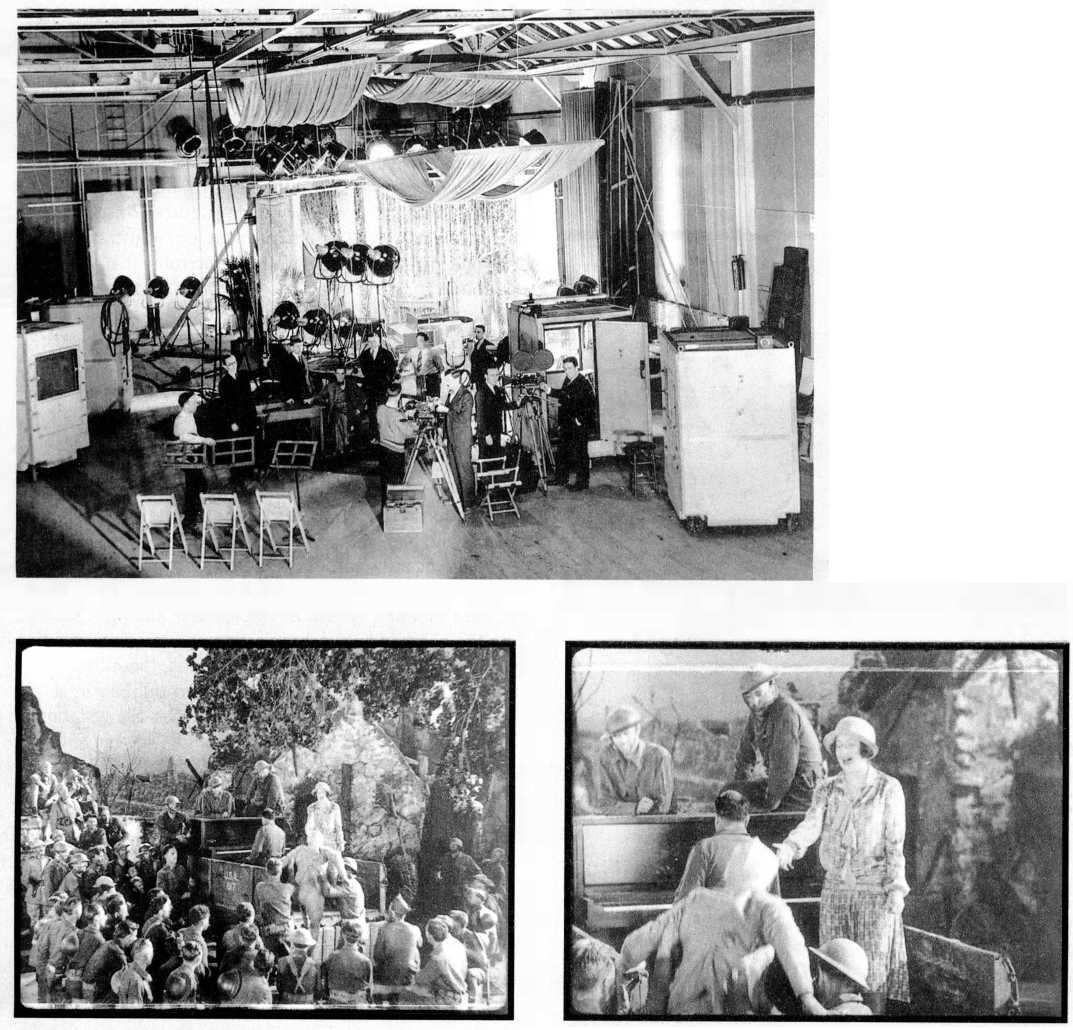Early sound technology posed stylistic problems for the film industry. The first microphones were omnidirectional and thus picked up any noise on the set. Cameras, which whirred as they filmed, had to be placed in soundproof booths. Moreover, initially all the sounds for a single scene had to be recorded at once; there was no "mixing" of sound tracks recorded separately. If music were to be heard, the instruments had to play near the set as the scene was filmed. The microphone's placement limited the action. It was often suspended over the set on heavy rigging; a technician moved it about within a limited range, trying to point it at the actors (9.2).
The photograph below shows three cameras filming a simple scene of two people on a bench. This technique, multi-camera shooting, was widely adopted because each scene had to be filmed straight through in its entirety. Although it would have been technically easier to shoot all the action in a lengthy take with one camera, filmmakers were reluctant to surrender the flexibility and emphasis that the continuity editing system had given them in the silent era. In order to be able to use devices like establishing shots, cut-ins, and shot/reverse shots and still match sound and lip movement smoothly from shot to shot, directors filmed the scene from a variety of vantage points. One camera m i ght have a normal lens and make the l o ng shot while another in the next booth made medium shots with a telephoto lens and a third filmed the ajction from a slightly different angle. At times, more than three cameras were used.
Even Warner Bros.’s Vitaphone shorts, which primarily displayed classical music and vaudeville acts, used multiple cameras to permit shot changes (9.3). For example, Behind the Lines, from the second Vitaphone program (shot August 1926), shows popular wartime entertainer Elsie Janis leading a group of soldiers in a series of songs; the seven-minute film's action was shot straight through, using two camera positions. The finished film cuts back and forth between these two positions (9.4, 9.5; note the stagetype backdrop in Warners' sound studio).
In feature films, multiple-camera shooting did not exactly duplicate silent-film style. The presence of the bulky booths made it difficult to get precise framings; in a conversation scene, for example, one shot might be taken at an angle to the characters, while the reverse shot is in profile (9.6-9.8). Also, since the cameras tended to be lined up in front of the scene, portions of the space often over-

9.2 In a Warner Bros. sound studio, an exterior dialogue scene for an early talkie is shot. The orchestra plays at the side, and three cameras in booths face the couple on the bench. Note the man on top of the booth, center, moving the microphone slightly to catch the pair's voices. Two additional microphones are suspended above the orchestra. Wires carry the sound from all three microphones to a sound-recording booth not visible here.
Lapped between shots (9.9-9.11). Incidentally, during the early years of sound, the track occupied part of the left of the rectangular frame used just for the image in the silent era. Thus many early sound films had square images (see
9.9). The Academy of Motion Picture Arts and Sciences soon recommended putting black strips at the top and bottom of the image to re-create a rectangular frame; this Academy ratio (or Academy aperture) remained standard until the advent of widescreen ratios in the 1950s.

9.4, 9.5 A perfect match on action as the view shifts from one camera to a second covering the scene: a soldier climbing onto a truck bed being used as a stage.
9.3 The crew and equipment, including four camera booths, at Warner Bros.'s Vitaphone sound studio in Brooklyn, c. 1926. The man in the dark suit, second from left, has his hand on a single microphone hanging from the ceiling. The empty set for a musical short involving a piano is visible at the rear.




 World History
World History









